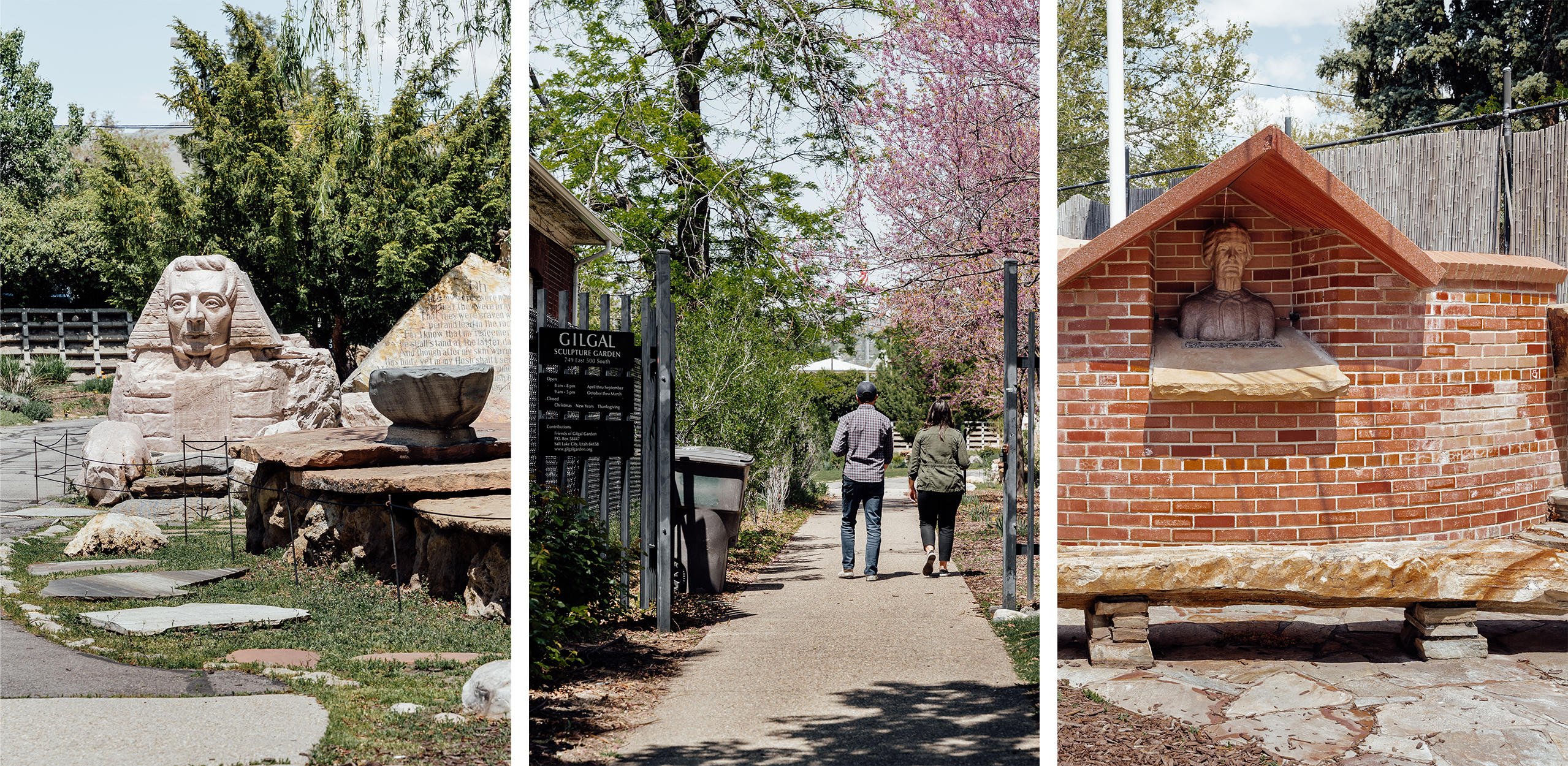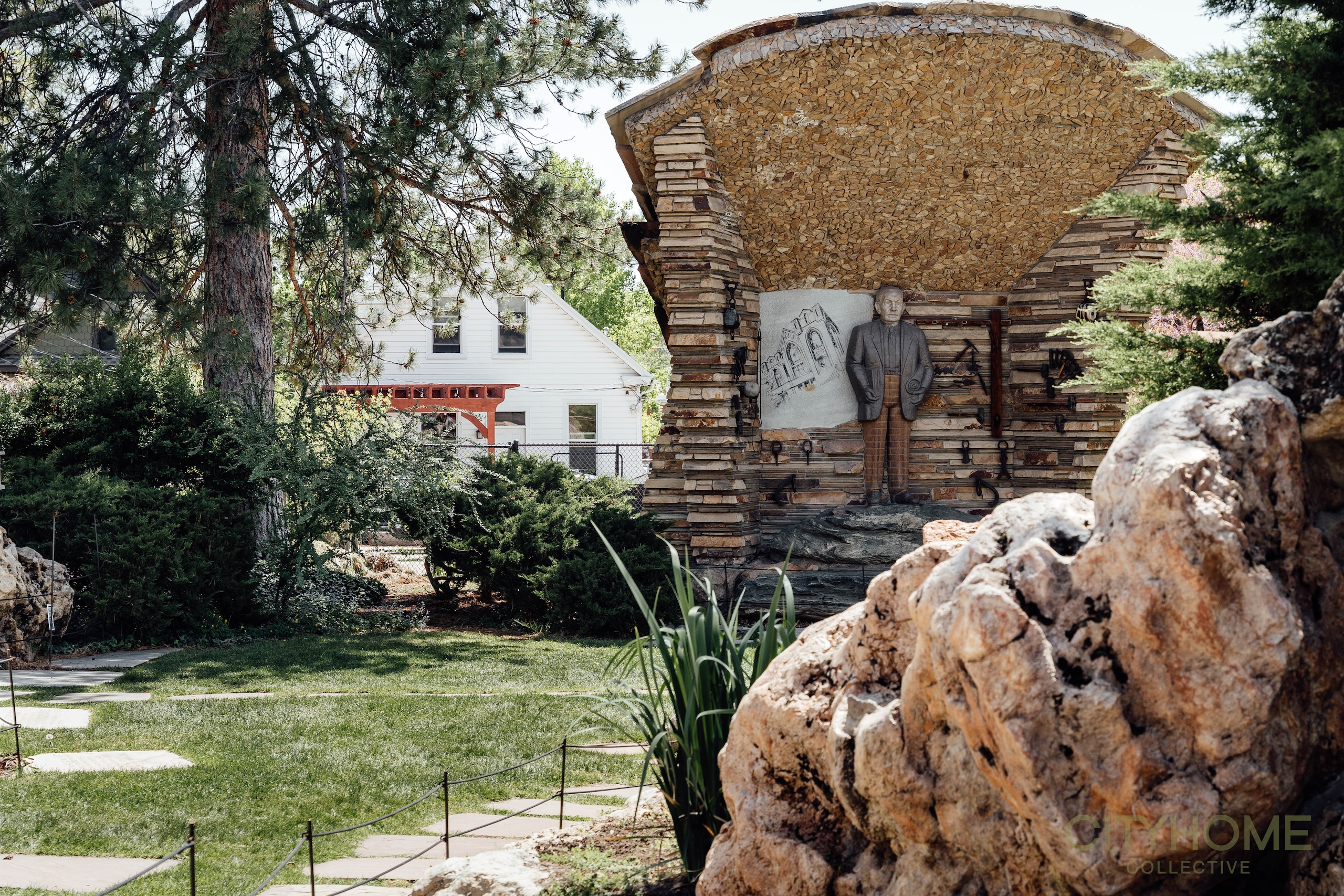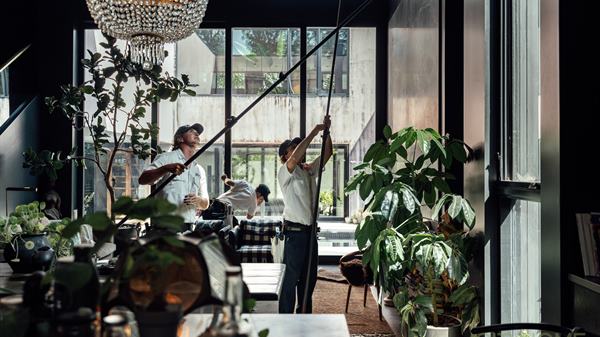We recently passed the keys to a home tucked just beside one of Salt Lake’s most intriguing landmarks — a red-brick beauty resting quietly along the edge of Gilgal Gardens. It was the kind of property that stops you in your tracks — full of soul, a little mysterious, and surrounded by the sort of neighborhood stories you can’t manufacture.
Because this pocket of the city — between Gilgal Gardens and Trolley Square — has layers. History, artistry, and a certain rhythm that feels entirely its own.
A Hidden Work of Art
Step through an iron gate on 500 South and you’ll find Gilgal Sculpture Garden, a tucked-away sanctuary that feels almost dreamlike. In 1945, stonemason Thomas Battersby Child Jr. began carving his beliefs into the landscape — twelve sculptures and more than seventy stones inscribed with scripture, poetry, and philosophy. The most famous piece? A sphinx bearing the face of Joseph Smith -- the 19th-century religious visionary whose founding of The LDS church set the course for Salt Lake City’s very identity: Smith’s revelations led his followers west, his “City of Zion” blueprint helped shape the city’s wide grid and civic layout, and his legacy still echoes in the buildings, culture and communal aspirations of the area.
“Gilgal” means circle of stones, and that sense of spiritual curiosity still hums through the garden today. What was once one man’s private meditation has become one of Salt Lake’s most quietly compelling public spaces — a reminder that art and belief often find their truest expression right at home.
The Story of Trolley Square
Just a block away stands another testament to Salt Lake City's transformation — Trolley Square. Built between 1908 and 1910, it began as a set of brick-and-steel barns housing the city’s streetcars. The 50,000-gallon water tower — still standing tall — kept the operation safe and humming.
When the trolleys disappeared mid-century, the barns fell silent until a group of forward-thinking locals reimagined them. In 1972, Trolley Square reopened as one of the nation’s first major adaptive-reuse projects — a mix of shops, galleries, and gathering spaces that honored the bones of the original structure. Today it remains a hub for connection — brick walls, iron trusses, sunlight filtering through clerestory windows — local shops mixed with larger businesses: living proof that good design only gets better with time.
A Neighborhood With Soul
Between Gilgal’s curious stones and Trolley Square’s red brick industrial arches lies a neighborhood that has managed to keep its heart intact. Walk the streets here and you’ll feel it: tree-lined blocks, century-old facades, and the creative pulse of people who appreciate the enduring sense of history
At cityhomeCOLLECTIVE, we’ve always believed that the best spaces tell stories — not just within their walls, but in the company they keep. Neighborhoods like this remind us that history and modern life aren’t opposites; they’re dance partners. A little grit, a little grace — that’s where the magic lives.










